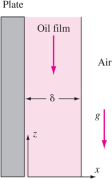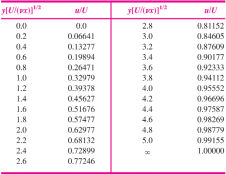关键词 > ENG103
ENG 103 Fluid Mechanics Final Exam
发布时间:2024-06-08
Hello, dear friend, you can consult us at any time if you have any questions, add WeChat: daixieit
ENG 103 Fluid Mechanics
Final Exam (12/5/2022)
Section I. Concept Problems [25%]
1. [5 points] Explain the difference between Navier-Stokes equation and Euler equation in the linear momentum.
2. [5 points] Explain why the experiment in a compressible flow is much more difficult than that in an incompressible flow. Consider the similarity law between a model and a prototype.
3. [5 points] Explain the benefits of neglecting the entrance effect in a pipe flow.
4. [5 points] In a wall-bounded turbulent flow, there are a laminar shear stress and a turbulent shear
stress. In the boundary layer, there are three different regions: a viscous wall layer, an overlap layer, and an outer layer. Discuss the dominant shear stress in each region.
5. [5 points] Write down Prandtl’s major contribution to fluid mechanics.
Section II. Equation Problems [75%]
Problem 1. [25%] Oil, of density p and viscosity μ, drains steadily down the side of a vertical plate. The oil film is assumed to become independent of z and have a constant thickness δ. Assume that the velocity in the z axis is w = w (x) only and that the atmosphere offers no shear resistance to the surface of the film at x = δ. Do not consider the pressure difference in the z axis.
(a) Solve the Navier-Stokes equation for w(x). (15%)
(b) Suppose that film thickness δ and the slope of the velocity profile at the wall  are
are
measured with a laser Doppler anemometer. Find an expression for oil viscosity μ as a function of  (10%)
(10%)

Problem 2. [25%] The reservoirs contain water at 20°C. If the pipe is smooth with L=4500 m and d=4 cm, what will the flow rate in m3/h be for Δz=100m?

Problem 3. [25%] Air at 20°C and 1 atm flows at 3 m/s past a sharp flat plate 2 m wide and 1 m long.
(a) What is the wall shear stress at the end of the plate? (10 points)
(b) What is the air velocity at a point 4.5 mm normal to the end of the plate? (5 points)
(c) What is the total friction drag on the plate? (5 points) Use the following Blasius velocity profile table.


